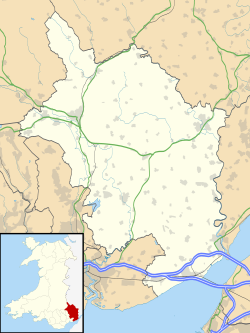| Church of St Bridget, Skenfrith | |
|---|---|
| Church of St Bridget | |
 "an important medieval church" | |
| 51°52′44″N2°47′30″W / 51.8790°N 2.7916°W | |
| OS grid reference | SO456203 |
| Location | Skenfrith, Monmouthshire |
| Country | Wales |
| Denomination | Church in Wales |
| Website | Official website |
| History | |
| Status | parish church |
| Founded | c.13th century |
| Architecture | |
| Functional status | Active |
| Heritage designation | Grade I |
| Designated | 19 November 1953 |
| Architectural type | Church |
| Style | Early English |
| Administration | |
| Diocese | Monmouth |
| Archdeaconry | Monmouth |
| Deanery | Abergavenny |
| Parish | Skenfrith |
| Clergy | |
| Vicar | Vacant |
| Priest | The Reverend G E Burrett |
The Church of St Bridget (or St Bride) lies at the north end of the village of Skenfrith, Monmouthshire, Wales. It is an active parish church and a Grade I listed building. The church is dedicated to St Brigit (Welsh: Sant Ffraid), to whom 17 churches are dedicated across the country.
